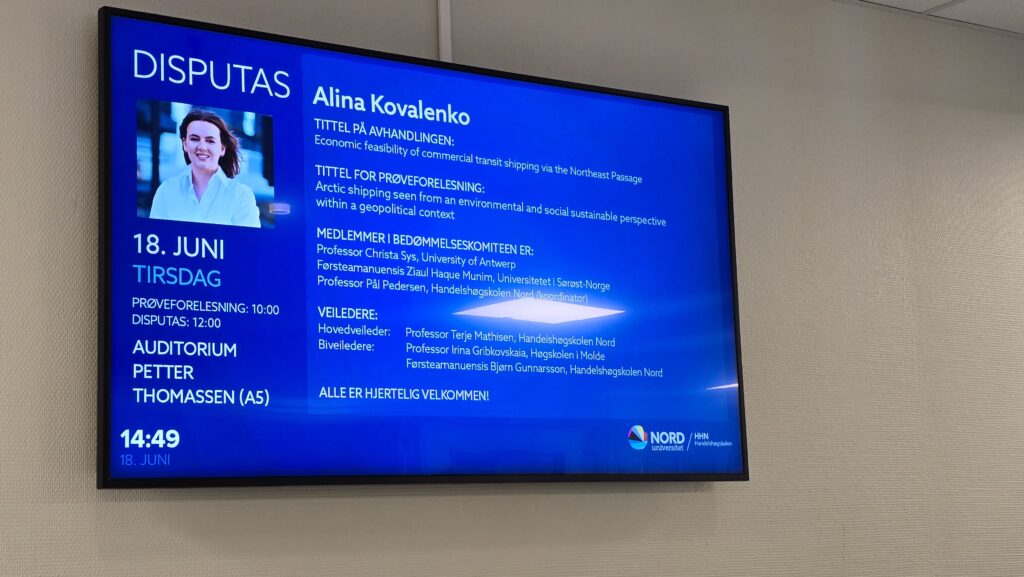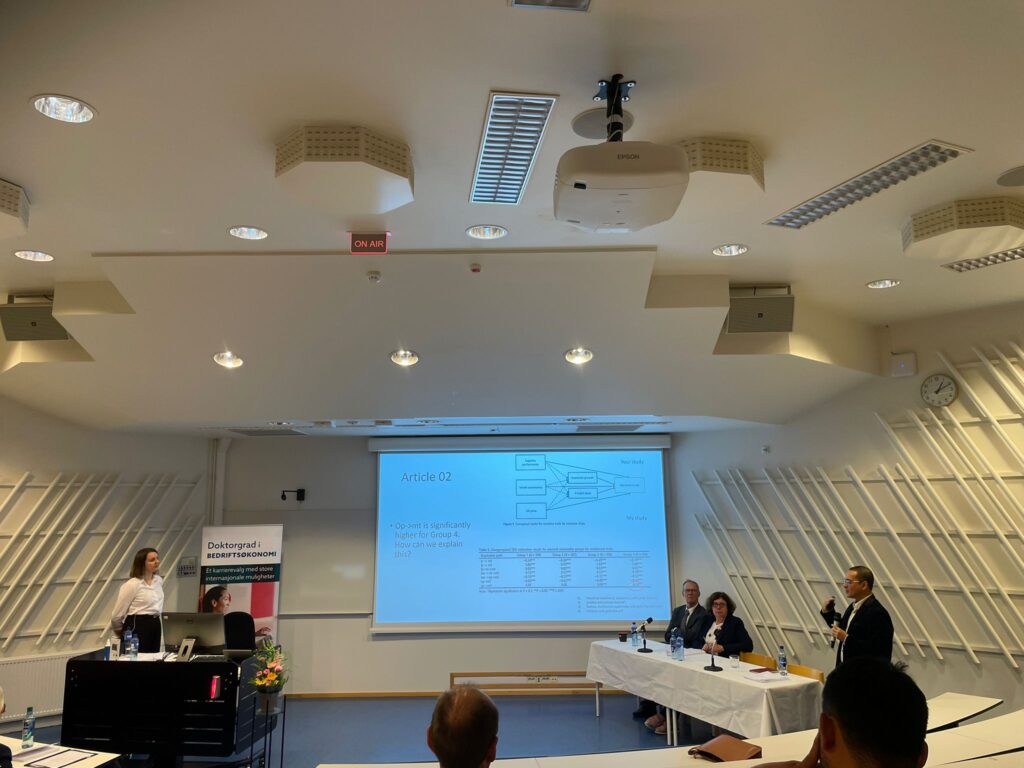First Opponent on the PhD evaluation committee on Arctic shipping at Nord University
Congratulations Dr. Alina Kovalenko on the successful defense of your doctoral thesis titled “Economic Feasibility of Commercial Transit Shipping via the Northeast Passage” at Nord University Business School today. It was a great pleasure to be on the evaluation committee as the first opponent together with Christa Sys from the University of Antwerp.




The economic feasibility of commercial transit shipping via the Northeast Passage (NEP) hinges on several factors that influence both costs and benefits.
Key Factors Influencing Economic Feasibility:
- Distance and Time Savings: The NEP offers a shorter route between Europe and Asia compared to traditional routes such as the Suez Canal. This can result in significant fuel savings and reduced voyage times, making it economically attractive for shipping companies.
- Climate Change and Ice Conditions: Melting Arctic ice due to climate change has made the NEP more accessible. However, ice conditions are still highly variable, and the need for icebreaker assistance and reinforced hulls for ships adds to operational costs.
- Seasonal Accessibility: The NEP is not navigable year-round. Its seasonal accessibility limits the window for commercial transit, impacting its reliability as a shipping route.
- Environmental and Regulatory Considerations: Stricter environmental regulations in the Arctic, aimed at protecting the fragile ecosystem, can lead to higher compliance costs. Additionally, there may be geopolitical and legal uncertainties related to the sovereignty and governance of the NEP.
- Economic and Market Conditions: The feasibility also depends on market conditions, including the demand for shipping services, fuel prices, and the global economic environment. High demand and favorable market conditions can enhance the economic attractiveness of the NEP.
- Infrastructure and Support Services: Adequate port facilities, search and rescue capabilities, and other support services along the NEP are crucial. Current infrastructure is limited, and significant investments are required to develop it to support regular commercial shipping.
While the Northeast Passage offers potential economic benefits through reduced shipping distances and times, its feasibility is constrained by seasonal limitations, variable ice conditions, environmental regulations, and inadequate infrastructure. A comprehensive cost-benefit analysis considering these factors is essential to determine the viability of commercial transit shipping via the NEP.